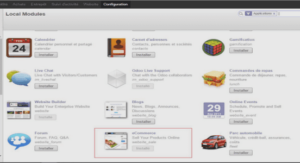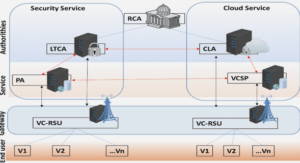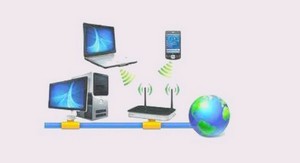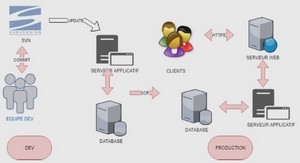Mesh Networks
Main characteristics WMNs are normally dened as consisting of two types of nodes: mesh routers and mesh clients [6]. Mesh routers are the nodes in charge of routing messages while mesh clients are the nodes that use the mesh routers’ capability to connect to other mesh routers/clients or even other networks through backhauls. Backhauls are special nodes capable of interconnecting the WMN to other networks, such as the Internet. A WMN is dynamically self-organized and self-congured, and the nodes should automatically create and maintain the links among them. In opposition to ad hoc networks, where normally no organization is imposed, WMNs consist of a wireless backbone with mesh routers providing connectivity capabilities to mesh clients. The wireless backbone provides large coverage, connectivity, and robustness in the wire less domain [6]. Mesh routers usually have minimal mobility, while mesh clients can be stationary or mobile nodes. Another important characteristic of WMNs is their capacity of integrating various existing networks such as Wi-Fi, the Internet, cellular and sensor networks through gateway/bridge functionalities in the mesh routers [6]. In contrast to ad hoc networks, where the connectivity depend on the individual contributions of end-users which may not be reliable, WMNs rely their connectivity on trustable mesh routers with, typically, low mobility and higher capacity. For both, WMNs and ad hoc networks the capacity of the network decreases as the density of the network increases. To minimize this eect a node should only communicate with nearby nodes, and nodes can be organized into clusters interconnected by relay nodes [6]. We need to remember that, in principle, the wireless medium is a broadcast one where, at any time, a number of dierent stations are accessing the channel concurrently. The main problem with this is that, if concurrent transmissions occur on the same carrier frequency at the same time, this may result in mutual destruction of the transmitted signals. Unfortunately the interference range is greater than the transmission one. The receiver can only decode or sense the message if the Signal-to-Interference-and-NoiseRatio (SINR) is above some level. For example, in Figure 5.2, node D can have its signal jammed by the signal sent from B to C and may not be able to actually decode the signal. The interference range means that any transmission made from A, which is in the interference range, can damage the signal between B and C. These dierent ranges can lead to a number of dierent scenarios, among them the hidden and exposed node problems, common in IEEE 802.11 networks. For WiMAX networks, scheduling and CAC are the techniques used to avoid the interference problems. However, regardless of the claims that WiMAX networks are free from such problems, Zhu and Lu [116] show they can also occur in WiMAX environments.
WiMAX Mesh Mode Overview
The WiMAX mesh mode, introduced in the standard by the IEEE 802.16a amendment [3], supports two dierent physical layers: W irelessMAN − OF DMTM, operating in a licensed band, and W irelessHUMANTM , operating in an unlicensed band. Both of them use 256 point FFT OFDM TDMA/TDM for channel access and operate in a frequency band below 11GHz. Even though the standard permits both Time Division Duplex (TDD) 5.3 WiMAX Mesh Mode Overview 79 Figure 5.2: Dierent ranges in the nodes communication 80 Chapter 5 Mesh Networks Message Name Description Connection Type Mode 39 MSH-NCFG Mesh Network Conguration Broadcast 40 MSH-NENT Mesh Network Entry Basic 41 MSH-DSCH Mesh Network Distributed Schedule Broadcast 42 MSH-CSCH Mesh Network Centralized Schedule Broadcast 43 MSH-CSCF Mesh Network Centralized Schedule Conguration Broadcast Table 5.2: Mesh MAC Management Messages. and Frequency Division Duplex (FDD) as access schemes, for the mesh mode only the TDD is allowed [2]. This means that the uplink and downlink transmissions share the same frequencies and, doing so, they must occur at different times. However, for IEEE 802.16j, the upcoming part of the standard related to relay networks some people proposed the use of FDD [101]. The Mesh frame is divided into control and data sub-frames. There are two types of control sub-frames: schedule control and network control sub-frame. The network control sub-frame provides basic functionality for network entry and topology management. The schedule control sub-frame controls the transmissions. The scheduling is done by negotiating minislot ranges for the trac demands of each link. All the communications are done in terms of the links established between nodes. All data transmissions between two nodes are done through one link and the QoS is provisioned over links on a message by message basis. Upper layer protocols are in charge of the trac classication and ow regulation.
Scheduling policies
In Mesh mode all transmissions have to be scheduled: not even the Mesh BS can transmit without having its transmission coordinated with other nodes [2]. To organize the medium access, the standard denes three dierent scheduling mechanisms: coordinated centralized scheduling, coordinated distributed scheduling and uncoordinated distributed scheduling. These three scheduling policies can be either used alone or together in the same network. According to some authors the centralized schedule should be used for external trac and the distributed schedule for intra network trac [25] [30]. This is due to the fact that the centralized scheduler relies on a mesh BS, which is a backhaul responsible for acting as a gateway between the internal and external network trac. Table 5.2 presents the messages used by the CAC and scheduling mechanisms in the WiMAX mesh mode





